
The most famous open-air Buddha statue at the Yungang Grottoes is in Cave 20. The grottoes are located about 16 km west of the city of Datong.[Photos/China Daily]
Mineral-rich Shanxi offers much more for intrepid tourists.
As a business reporter for China Daily, I confess that the only thing I knew about Shanxi prior to my visit was that the province was rich in coal resources and the mining and chemical industries were the key economic drivers of the region. Such information is unlikely to appeal to the average traveler, but undoubtedly, Shanxi is a hidden treasure waiting to be discovered.
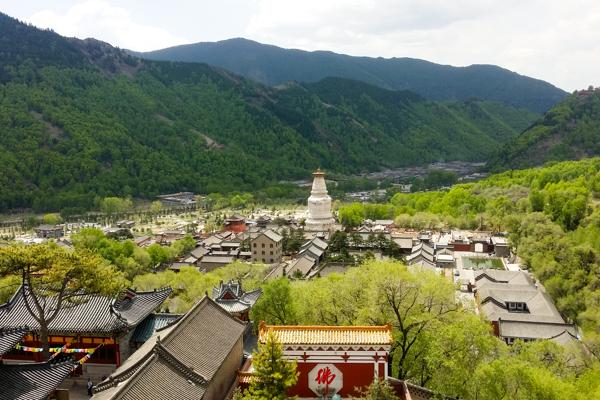
Wutai Mountain is regarded as one of four sacred mountains in Chinese Buddhism.
I wrongly assumed that mineral-rich Shanxi was an industrial hub with few tourist attractions but was pleasantly surprised to discover the province is a place to discover ancient Chinese culture and picturesque landscapes.
Locals boast that the province is one of the regions where Chinese culture originated and written records show that Shanxi’s history dates back 3,000 years.
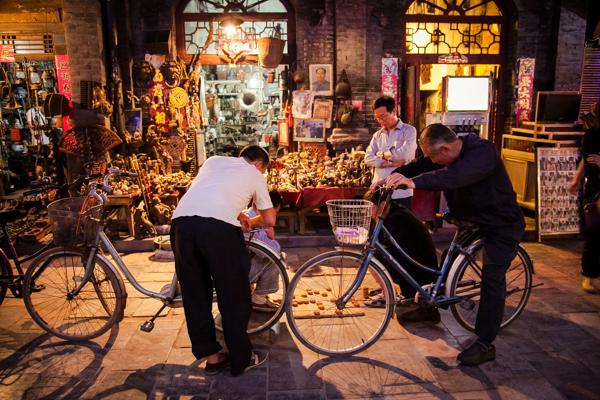
Local residents play Chinese chess in the evening in Pingyao.
This is reflected in the fact that tourism is becoming the new engine for the province’s economic development.
“Shanxi is making important investments to attract tourism and improve the quality of services that are being delivered,” said Ma Bin, an official with the publicity department of the city of Datong.

Qiao’s Grand Courtyard is an example of the traditional residential buildings of North China.
“The provincial government is working on opening new tourist attractions in the coming years so more people can discover our province,” he said.
Shanxi is a mere three-hour ride by high-speed train from Beijing West Railway Station, but when you arrive at its capital city of Taiyuan you instantly notice a radical change of scenery and bold contrast with the capital’s flat landscape.
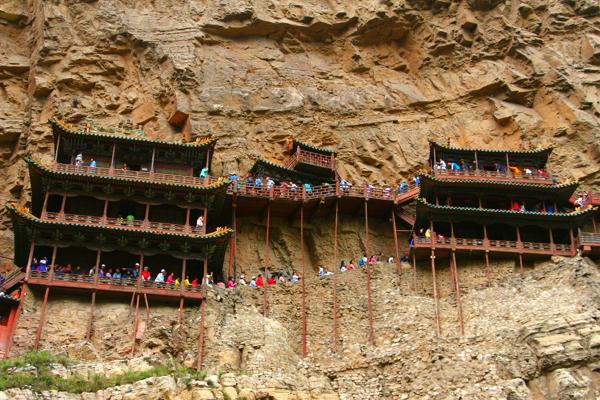
The Hanging Monastery is suspended 75 meters above the ground.
The province’s name derives from a combination of the Chinese words shan, meaning mountain, and xi, meaning west-referring to being west of the Taihang mountains.
The region in the north of China and in the middle reaches of the Yellow River is very mountainous and hilly, and thus offers many opportunities to venture into the highlands for trekking and climbing. It was not uncommon to see groups of travelers trekking across the green peaks as our group rode the bus between tourist attractions.
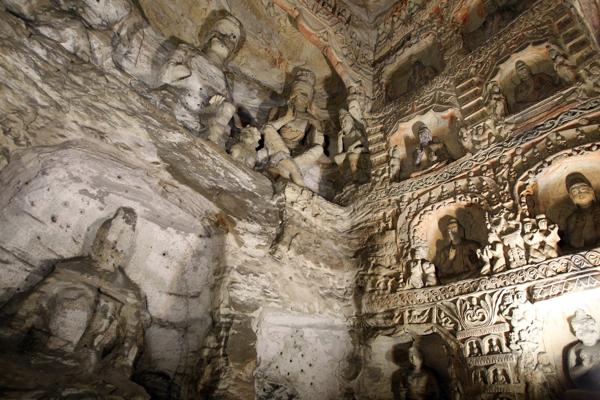
The grottoes are located about 16 km west of the city of Datong.
A sudden change of temperature announced our arrival at Wutai Mountain, located at the headwaters of the Qingshui River. Wutai benefits from a cold microclimate and has earned the name “Cool Mountain” because of its low temperatures throughout the year.
Of all the landscapes I saw during my trip, Wutai Mountain was probably the most striking because of its beautiful green fields and the mysticism that surrounds it.
The north peak of Wutai Mountain is the highest point in Shanxi province at an altitude of 3,058 meters. Chinese Buddhists believe the peak’s high altitude can take you away from earthly concerns.
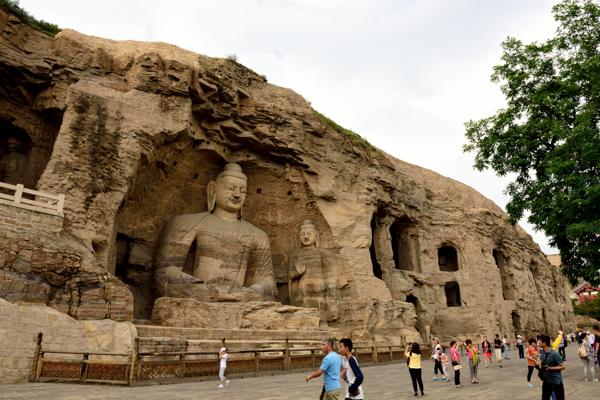
This is one of the reasons Wutai Mountain is regarded as one of four sacred mountains in Chinese Buddhism, and it is a favored destination for Buddhist pilgrimages.
Its green hills are a perfect place for a spiritual retreat as they integrate natural scenery, ancient architecture and folk customs.
These days, there are 48 temples of different architectural styles around the mountain region. Additionally, Wutai Mountain is home to some of the oldest existent wooden buildings in China that have survived since the Tang Dynasty (AD 618-907), such as the Nanchan and Foguang temples.
Lama temples also decorate the sides of the mountains with their traditional green and yellow architecture.
At the peaceful sacred sites, it is common to see monks chanting mantras and Buddhist devotees burning incense sticks and rolling prayer wheels as they ask for the good health and well-being of their relatives.
In the evenings, travelers can renew their energy with local food delicacies that include rabbit meat served with paprika and wild mushrooms grown on the sides of the mountain. One can also imitate the locals by drinking a small bowl of aged vinegar before the meal.
At our next destination, we needed to look up again to appreciate the beauty of the Xuankong Temple, also known as the Hanging Monastery. Although I had seen pictures of it before my visit, I was still impressed to see up close that the wooden temple defies gravity by literally hanging in the air on the side of Hengshan Mountain.
The Hanging Monastery, located only 80 kilometers from Shanxi’s second-largest city of Datong, is suspended 75 meters above the ground as if part of a magic trick.
In 2010, the architectural wonder won the dubious honor of being listed by Time Magazine as one of the “10 Most Precarious Buildings” in the world.
While climbing the narrow stairs that take travelers up to the temple, all I could think of was my mother’s fear of heights and how much courage it would take someone like her to get to the top. But in the end, curiosity and a sense of adventure overcame my natural fear.
In order to calm the most anxious travelers, I must say that what you see is all part of a magical illusion.
The temple is not suspended in the air with the help of only fragile wooden posts, as it initially appears to visitors. In reality, a foundation of large beams, unseen by visitors, was inserted into the rock to secure the structure.
Therefore, no leap of faith is needed to enjoy the visit, as the temple has remained intact through various disasters during the last 1,500 years, including several earthquakes.
Only 100 km south of Taiyuan stands the ancient city of Pingyao. The town, which is listed as a UNESCO World Cultural Heritage site, is a living example of an ancient Chinese merchant center.
A 12 meter-high wall that stretches for 6.4 km protects the labyrinthine city, known as “Turtle City” because of its street layout that resembles the body of the hard-shell reptile.
Pingyao is a charming combination of narrow streets, beautiful courtyards and enough shops to satisfy the most demanding souvenir hunters.
Our trip ended with a visit to the Yungang Grottoes, located about 16 km west of the city of Datong. The impressive site, composed of 51 grottoes that host thousands of ancient carved Buddha statues, reinforced the feeling that Shanxi is filled with cultural treasures that one may not be expecting but that are well worth looking for.
